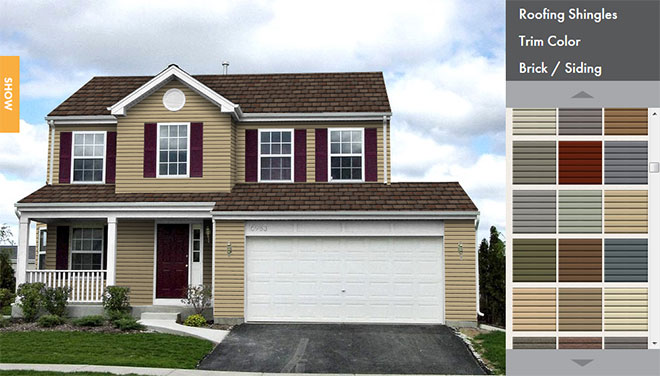Commercial Roofing Systems Minneapolis MN
All types of roofing systems are exposed to normal aging due to various forms of chemical and physical stresses. Smaller isolated problems like abuse, stress concentration, and initial workmanship can also shorten the service life of your commercial roof. Without a preventive maintenance plan, these roofing problems are usually undetected or ignored and that dramatically escalates the extent of the damage and becomes an expensive repair.
Increase The Life of Your Commercial Roof
What is the best roof system? Although there are strong opinions from all sectors of the industry on that matter, the truth is that there is no one answer. Each building is different, and the circumstances surrounding each project could alter the roof system choice. The success of a roof system depends on meeting five criteria: design, materials, workmanship, weather and maintenance.
Proper Roof Design
Key components to proper design include wind uplift calculations, drainage design, thermal factors, perimeter edge design and existing building conditions. All of these items should be considered for all roof projects.
In the past decade, facility executives have become more active in specifying the types of application methods that they require at their facilities. This has forced designers and contractors to apply systems that comply with the facility executive’s constraints. Oftentimes facility executives are concerned with noise, smoke and access to interior work areas during construction. Providing systems that address those constraints and still provide waterproofing protection to the facility can be challenging.
Proper design also includes selecting materials and systems that are compatible with existing building conditions. For instance, the type of deck and slope of the deck will influence the types of materials that are applied. Consideration of the geographic and environmental conditions of the building’s location also plays a role in system selection. Buildings located in high-velocity wind zones and areas prone to frequent hailstorms require special design considerations.
Roofing Materials and Workmanship To Improve Longevity
Quality Materials
Not all roof materials are the same and not all materials are suitable for all buildings. This is reflected in cost and through material comparison. Long-term roof performance requires quality materials. Minor economic savings in material costs could result in premature roof failures or shortened service life. The types of materials applied should be compatible to the building conditions and applied in accordance with the manufacturer’s latest printed requirements. The applied materials should be new, free of all moisture and manufactured in compliance with ASTM standards. Proper material storage at the project site is also required.
Quality Workmanship
The roof is one of the only major building components that is fully constructed on-site. It is a system of components and diverse materials. Although there is some repetition in component applications, detail work can vary from day to day. Specialty crews that apply the same types of systems on every project are becoming increasingly rare. The current roof mechanics are being asked to apply all types of systems and may not complete the same system on two consecutive projects for months. This requires skilled contractors with greater versatility. They need to have the solutions and capabilities to solve your commercial roofing problems.
A large percentage of premature roof failures occur due to improper workmanship. Quality applications require skilled workmen who are familiar with the materials that are being applied. The system applicators should be properly trained to apply the materials in compliance with the manufacturers requirements.
Weather and Maintenance Impact Roof Longevity
Weather Considerations
All of the current roof materials and systems have ambient temperature constraints. Application of these materials in conditions not suitable to the material’s constraints (too hot, too cold, in wet weather) will contribute to premature failure. The recent surge in the industry to the use of cold adhesive materials has increased the need to provide material application in proper temperature ranges.
Maintenance Is Key To Roof Performance
Contrary to popular opinion, the maintenance-free roof system does not exist. All types of roofs require a certain level of attention. In fact, from the moment of installation, the roofing system undergoes continuous deterioration. Extreme temperature fluctuations as well as snow, ice, hail and wind prevail upon the roofing surface. In short, the elements are the biggest deterrents to the roof system over its service life. Traffic on the roof and the installation of mechanical and other equipment can also cause physical damage that contributes significantly to roofing failures.
Roofs are exposed to the elements 24 hours a day, every day of the year. In summer, the roof surface temperature can exceed 200 degrees F. In winter, the roof surface can be exposed to snow and ice for weeks at a time. And in spring and fall, the roof faces winds stronger than any that other exterior building components are exposed to.
Protect Your Investment
The most important reason to implement an annual roof maintenance program is to extend the service life of the existing roof system. Comprehensive repairs not only make the roof last longer, but also provide cost savings to the facility executive. A good maintenance program will detect or prevent leaks and other roofing problems. Problems are addressed at their initial stage, minimizing or eliminating damage to interior furnishings, equipment, building materials and finishes. In this way, the facility executive avoids expenditures for such items as deck damage repair and associated costs resulting from typical maintenance practices, which simply respond to leaks. Development of maintenance guidelines is based on the profile of the roof systems in place.
Commercial Roofing Requires a Professional
Roof maintenance is like mortgage insurance. A manageable yearly expense could provide the dividend of a roof system that meets or exceeds its anticipated service life. For instance, a 20-year roof system will protect the interior operations of the building for the full 20 years; any service life that extends beyond this time could be considered free money. Every year that the roof system is extended is an additional year that the facility executive does not have to spend a substantial amount for remedial roof construction.
Your roof is an investment, and like any investment, you want to do what you can to protect its value.
A life of a building’s roof depends on several contributing factors including the quality of the materials, the quality of installation, and preventative maintenance to spot problems before they become large ones. Some roofs are designed for a life expectancy of 30-plus years while other roofs have a life expectancy of 10 years or less. Research proves that the number one reason why roofs do not survive their anticipated life cycles is the neglect of maintenance.
Proper maintenance of your commercial/flat roof is important because it helps to address small problems early and eliminate the risk of larger, more costly repairs later. Manufacturer warranties will require that annual maintenance is performed. An experienced Minnesota Commercial Roofing Contractor can work with you to design a plan that will help extend the life of your roof.
A life of a building’s roof depends on several contributing factors including the quality of the materials, the quality of installation, and preventative maintenance to spot problems before they become large ones. Some roofs are designed for a life expectancy of 30-plus years while other roofs have a life expectancy of 10 years or less. Research proves that the number one reason why roofs do not survive their anticipated life cycles is the neglect of maintenance.


 Click Here
Click Here Click Here To Use
Click Here To Use